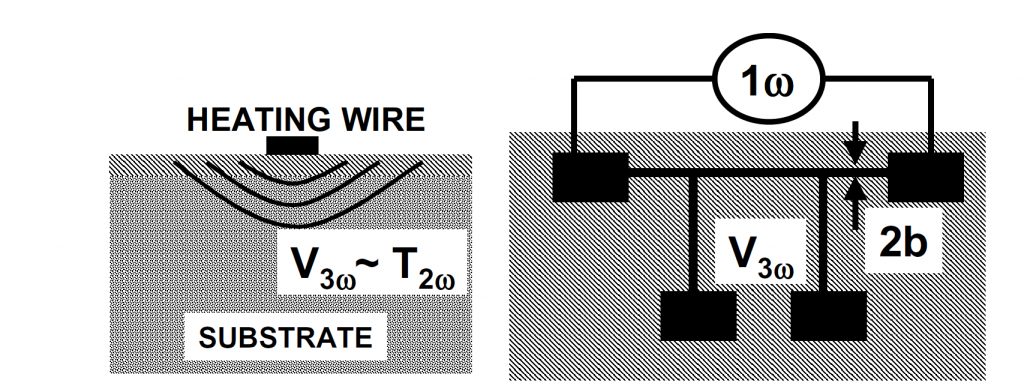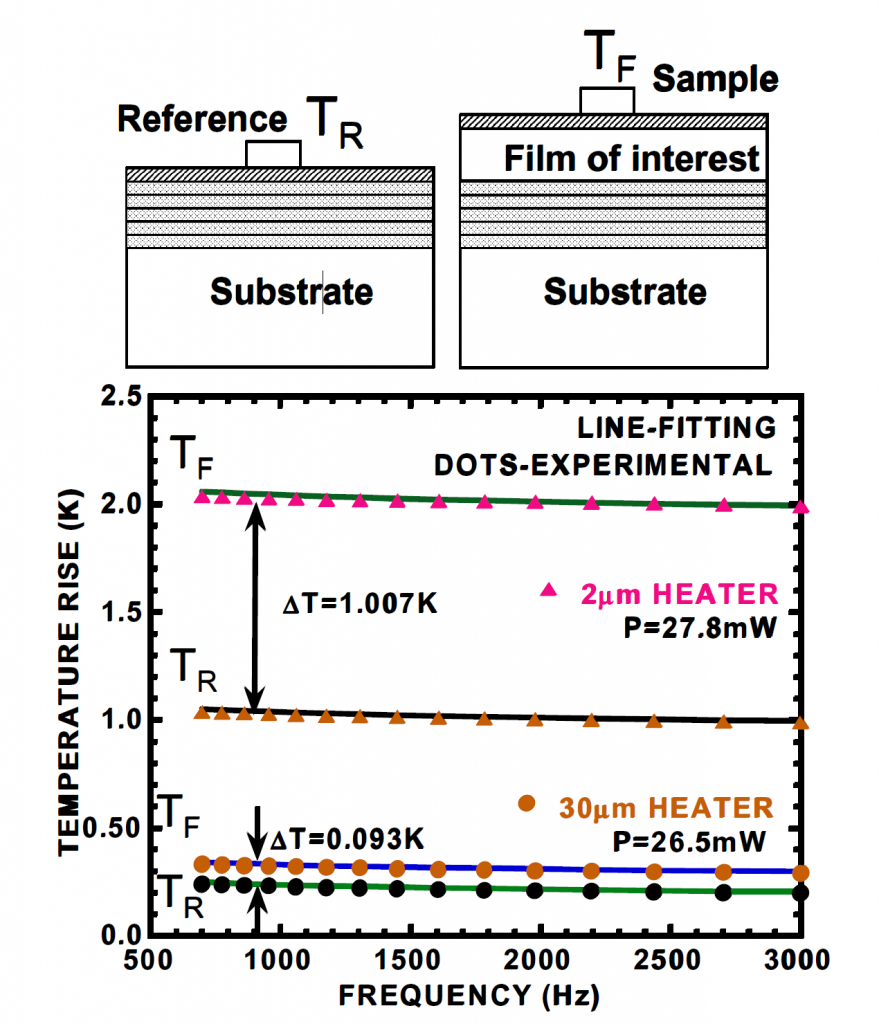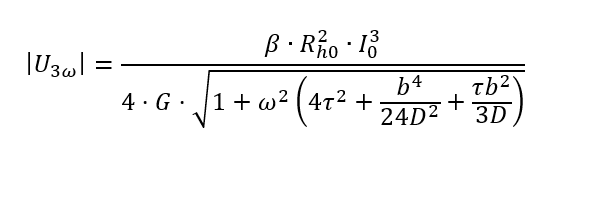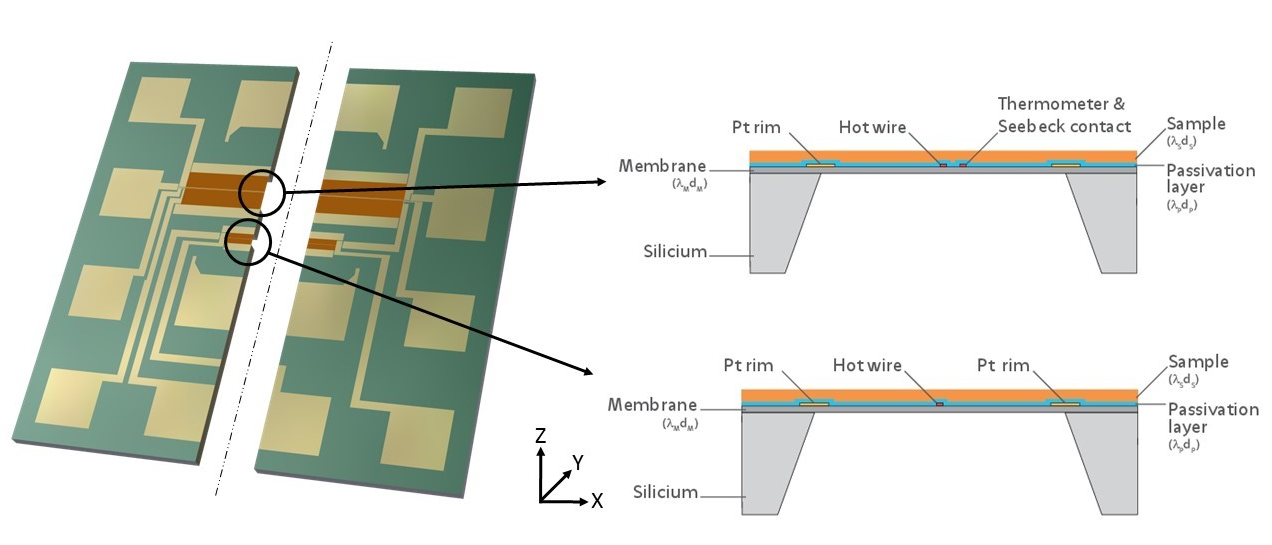3ω Omega method
3ω measurement technique – an approach to measuring thermal conductivity
A widely implemented approach for measuring the thermal conductivity is the 3ω method. Although initially developed for measuring the thermal conductivity of bulk materials, the method was later extended to the thermal characterization of thin films down to few nm thick.
Moreover, the 3ω technique was then adapted for measurement of the in-plane and cross-plane thermal conductivity of anisotropic films and freestanding membranes. This technique is currently one of the most popular methods for thin-film thermal conductivity characterization.
 Experimental setup (incl. metal line for heating/sensing) for the 3 Omega technique
Experimental setup (incl. metal line for heating/sensing) for the 3 Omega technique
In the 3ω method a thin metallic strip, which is in thermal contact with the sample, acts as both a heater and a temperature sensor. For the measurement an AC current,
with angular modulation frequency and amplitude passing through the strip, generates a heating source with power

where Rh is the resistance of the strip under the experimental conditions, and causes a rise in temperature in the form of

and consequentially an oscillation in the resistance of the stripe

at the angular frequency 2ω, with is the temperature coefficient of resistance of the metal strip.
With regard to the frequency, the phase shift depends on both, the geometry of the heater and the underlying materials.
By measuring the voltage drop across the heater, according to Ohm’s law, one gets an amplitude modulated signal which has a small component at the third harmonic 3ω, which can be extracted with a lock-in amplifier.
For the calculation of the sample’s thermal conductivity as well as specific heat capacity, the corresponding heat diffusion equation needs to be solved, which depends on the experimental setup.
Differential 3 Omega approach with two measurements
A typical cross-plane thermal conductivity approach with a thin film on a bulk substrate is the differential approach with two measurements:
The first one on the blank substrate only, and the second one includes the layer of interest.
The layer acts as a thermal resistor connected in series between the heater and the substrate and ensures an increase in the temperature oscillations, in comparison to the measurement without the thin film.
From this increase, the thermal conductivity of the can be determined using Fourier’s law:

with w and l are the with and length of the heater.

Thermal conductivity in the plane using 3w measurement technology
Another experimental setup to determine the in-plane thermal conductivity as well as specific heat capacity, is a heater aligned to the middle of a membrane or suspended substrate, respectively. In this case, the thermal behavior of the suspended part can be evaluated using the following correlation:

With G=2λdlb^(-1), is the thermal time constant, b the width and l the length of the membrane and D is the thermal diffusivity.
 Integrated measurement Chip for in-plane thermal conductivity measurements on thin films using the 3 Omega method
Integrated measurement Chip for in-plane thermal conductivity measurements on thin films using the 3 Omega method
Which properties will be determined?
The 3ω measurement technique is an electrothermal measurement technique for determining the thermal conductivity, thermal diffusivity and specific heat capacity of bulk material (i.e. solid or liquid) and thin layers using an alternating current driven metal strip as heater.
The metal heater applied to the sample is heated periodically. The temperature oscillations thus produced are then measured. The thermal conductivity and thermal diffusivity of the sample can be determined from their frequency dependence.
